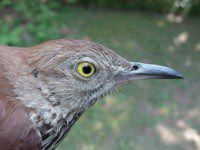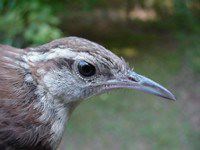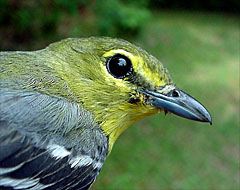
Photo © Hilton Pond Center
- Growing most often in open, sunny places, the Ox-eye Daisy (Chrysanthemum leucanthemum) is found across North America. However, there's more to this common wildflower than first meets the eye. Daisies are in the Composite Family (formerly Asteraceae)--a large group that includes sunflowers and other plants whose star-like flower heads are really made up of TWO kinds of flowers. In daisies, the flat, white structures that are often incorrectly called "petals" are really "ray flowers" --specialized structures that are sterile but serve to get the attention of potential pollinators. The daisy's yellow "eye" is made of dozens of fertile "disk flowers," each of which makes one seed. In some composites, ray flowers bear untraviolet markings that are invisible to human eyes but serve to guide bees toward nectar and pollen in the disk flowers.
- Many kinds of insects are attracted to big, showy composite flowers, and it shouldn't be surprising that things that eat those insects hang out on daisies waiting for lunch to arrive. In the photo above, a young Flower Spider--also called Crab Spider--sits motionless on the flowerhead, its long front legs poised to grab a tiny bee or wasp. As the pollinator alights, the spider quickly clutches its prey and injects a paralyzing toxin with its fangs; the venom also contains digestive enzymes that turn the bee's innards into porridge that the spider sucks back out. Yummy! There are about 200 species of Flower Spiders (Thomisidae) in the United States.
|




